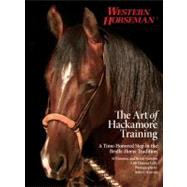
What is included with this book?
The New copy of this book will include any supplemental materials advertised. Please check the title of the book to determine if it should include any access cards, study guides, lab manuals, CDs, etc.
The Used, Rental and eBook copies of this book are not guaranteed to include any supplemental materials. Typically, only the book itself is included. This is true even if the title states it includes any access cards, study guides, lab manuals, CDs, etc.
Introduction
The sun sets over the lush grazing grounds of early 1800s California, bathing herds of cattle numbering greater than 400,000 head in the last of its warm light. A horseman astride a fine, responsive mount rides away. His wide-brimmed hat casts a distinctive shadow over his floral bandana and the shoulders of his bolero jacket. He wears fitted pants, unbuttoned from the knee down, showing his leatherbotas,or leggings, and large-roweled spurs, which display his status as a horseman who walks only should circumstance require. The bright sash he’s donned boasts of his tradition and of loyalty to his Spanish roots.
The rider’s hands work a horsehair mecate rein with skill and precision, communicating concise cues to his youngjaquima(hackamore)horse. The horse feels the pull and release of the braided hackamore on his nose and jaw, and moves his body and feet willingly with swift athleticism—the vaquero’s pride. Man and horse are a team.
This mount is not only a working partner who allows the vaquero to drive the herds and throw his reata, but also is an advertisement for the vaquero’s skills as a horseman. As he draws a rein, the quick-footed horse gives his nose and spins or slides to a halt in a show even more eye-catching than the flashy Spanish clothing. To the native Indians the vaquero is a skilled tradesman—one to be revered.
The vaquero, however, is much more than a showy horseman; he is the product of secrets and traditions passed from fathers to sons for generations. He understands the patient progression of training a young horse and knows that the time required can no more be hurried than the change of seasons. The horseman takes equal pride in his equipment, in the fine, smooth braid of the hackamore, the fit of the fiador and feel of the mecate. These tools are not only a means of making his living, but also tools for displaying the very artistry born into him, as much so as the blood in his veins.
With his saddle horse turned loose in the corral for the night, the vaquero wipes down his tack and takes a round stick to the inside of the nose button of his hackamore, smoothing the sweat and dirt to a flat polish. Though tired from the long day, he kneels down to finish braiding the heel knot of the thin, quarter-inchbosalito, the light bosal he needs as he advances his hackamore horse through the evolution of a finished bridle horse, the same way his father did and his father’s father before him.
Now those days and many of the vaquero ways are long gone, having given way to the steam engine, the Model T and the airplane. Today the luxury of unlimited tack to aid in training horses is available at the click of a button on high-speed Internet connections. Fast-paced generations have carried us far from our history and the time-honored customs of our founding horsemen-fathers. This loss of tradition and knowledge has left many ignorant of the old-time culture that colors the tightly braided hackamore still in use today.
In the following pages, we wish to share with you the art of training in la jaquima, the hackamore. Let us take you beneath the exercises and training drills to discover the true art of this mechanism, a process rich with heritage and patience. The hackamore, by design, cannot be manipulated by thoughtless hands to achieve any fine result. Only the skillful pull-and-release of a savvy trainer can coax a horse to give and move with the coveted softness.
Armed with such time-tested knowledge and one-foot-in-front-of-the-other diligence, you can develop a new skill set that opens doors of communication and trust with your horse, as well as build a solid foundation for all the training to come. These old practices are timeless, enabling fluid progression in horse training and heightened levels of performance.
With a better understanding of the hackamore’s colorful history—how, why and by whom it was created, used and perfected—you can take the importance of this piece of equipment to heart in your own training program. The many different types and sizes of hackamores, coupled with the education of how and when to use each of them, can broaden your perspective and ability as a trainer, from that all-important first ride on a fresh colt through the entire journey of finishing your bridle horse.
These proven practices, once passed down from fathers to sons, have been dying out in recent generations. However, laid out in this book are those secrets—the methods and means of making a responsive, willing horse through proper gear, skilled hands, and sound training theory.
The lifestyle that birthed the venerated reined cow horse has faded into a dusty memory. But if you look closely, you can see that history woven into the patterns of the rawhide. Look closer still, and you find the salt of the vaquero’s sweat, the calluses of his hands, and the red of his blood in the details …in the very art of the hackamore.